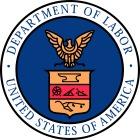
Employers might know (or if they do not, they should) that the National Labor Relations Act (or “NLRA”) applies even to employers who do not have a unionized workforce. Due to the broad reach of the NLRA, the recent guidance issued by the General Counsel of the National Labor Relations Board (“NLRB”) regarding employee handbook policies is a must-read for human resources professionals and those charged with maintaining their company’s employee policies.
The focus of the General Counsel’s “Report” issued on March 18, 2015, arises out of Section 8(a)(1) of the NLRA, pursuant to which the mere maintenance of a rule that has a chilling effect on an employee’s Section 7 activity is unlawful. (“Section 7 activity” is any activity by an employee or group of employees by which they seek to improve their pay and working conditions, regardless of whether or not they are already unionized.) The most important obstacle for employers to consider when drafting and revising their policies, according to the General Counsel, is the fact that policies will be considered unlawful by the NLRB when they would bereasonably construed by employees as restricting Section 7 activity, even if the policies are not designed or intended to have that effect.
The primary recommendation from the General Counsel is that handbook policies include clear and specific language, precise examples, and explanatory context so that employees will not reasonably construe otherwise lawful policies as limiting their Section 7 activity.
An exhaustive recitation of the General Counsel’s extensive examples of lawful and unlawful handbook language goes beyond the scope of this article. However, as a general matter, the General Counsel found that language that provided sufficient context to employees, so as to avoid employees misconstruing the targeted conduct, was the most likely type of policy to meet with NLRB approval.
Again, as with other policies, the use of clarifying examples and context to avoid misinterpretation is highly recommended in the Report.
Regarding confidentiality, for example, handbook policies are considered unlawfully overbroad if they leave employees with the impression they cannot discuss wages, hours, and other terms and conditions of employment with fellow employees and with non-employees. Employers can minimize the risk of creating such an impression by defining terms such as “confidential information,” or by placing confidentiality policies within a context that clarifies their scope, such as within handbook sections addressing trade secrets or patient medical information.
As for employee conduct rules governing action that might include criticism of management (a protected Section 7 activity), the NLRB considers it unlawful for such rules to prohibit merely “rude” or “disrespectful” behavior toward managers or the “company” without sufficient clarification or context. Even false statements cannot be prohibited by a blanket rule (maliciousfalsehoods, however, may be lawfully prohibited). Businesses may nevertheless prohibit disrespectful or unprofessional behavior toward co-workers, clients, and other non-managers – as opposed to the company management – and may generally prohibitinsubordination toward management, as well.
Company media policies, in the meantime, need to be clear that any prohibition on speaking with the media is with respect to anyone purporting to speak on behalf of the employer without authorization. Employees should not be led to believe, whether intentionally or not, that they are in any way limited from speaking with the media regarding their employment in an individual capacity regarding wages, benefits, and other terms and conditions of employment. For example, the General Counsel found lawful a media policy that indicates one person only should speak for the company and that instructs any employee interviewed to state that he or she is not authorized to comment for the employer in response to any reporter inquiries.
The General Counsel looked unfavorably upon employee handbook policies that invoked anti-strike language within policies restricting employee movement to and from work. Such policies should not prohibit “walking off the job,” which can be misconstrued to refer to protected strike actions and walkouts. Phrases like “work stoppage” should also be avoided. The General Counsel, however, found acceptable a policy that simply stated, “Entering or leaving Company property without permission may result in discharge.” But employers must also be careful regarding a requirement of permission before employees can enter property, as employers may not deny off-duty employees access to non-work areas (such as parking lots) unless justified by legitimate business reasons.
As a final example, the General Counsel’s Report indicates that lawful employee policies may prohibit employee activity that amounts to competition against the company or to self-dealing, but a policy may not, under the broad label of a “conflict-of-interest” rule, prohibit any conduct that is not “in the best interest” of the employer because protected Section 7 activity can, of course, be against the interest of the company.
Employers with questions on a particular situation should consult with experienced labor and employment counsel regarding their handbook policies.
Like this:
Like Loading...






 Beginning with the observation that “It’s been a few good days for America,” Obama announced the salary threshold where workers wouldautomatically qualify for time-and-a-half overtime wages would be raised from $23,660 to $50,440. This change in regulation can be made by the Administration, with no need for Congressional approval. The announcement came through a blog post written by the President for the Huffington Post, you can read it
Beginning with the observation that “It’s been a few good days for America,” Obama announced the salary threshold where workers wouldautomatically qualify for time-and-a-half overtime wages would be raised from $23,660 to $50,440. This change in regulation can be made by the Administration, with no need for Congressional approval. The announcement came through a blog post written by the President for the Huffington Post, you can read it 
